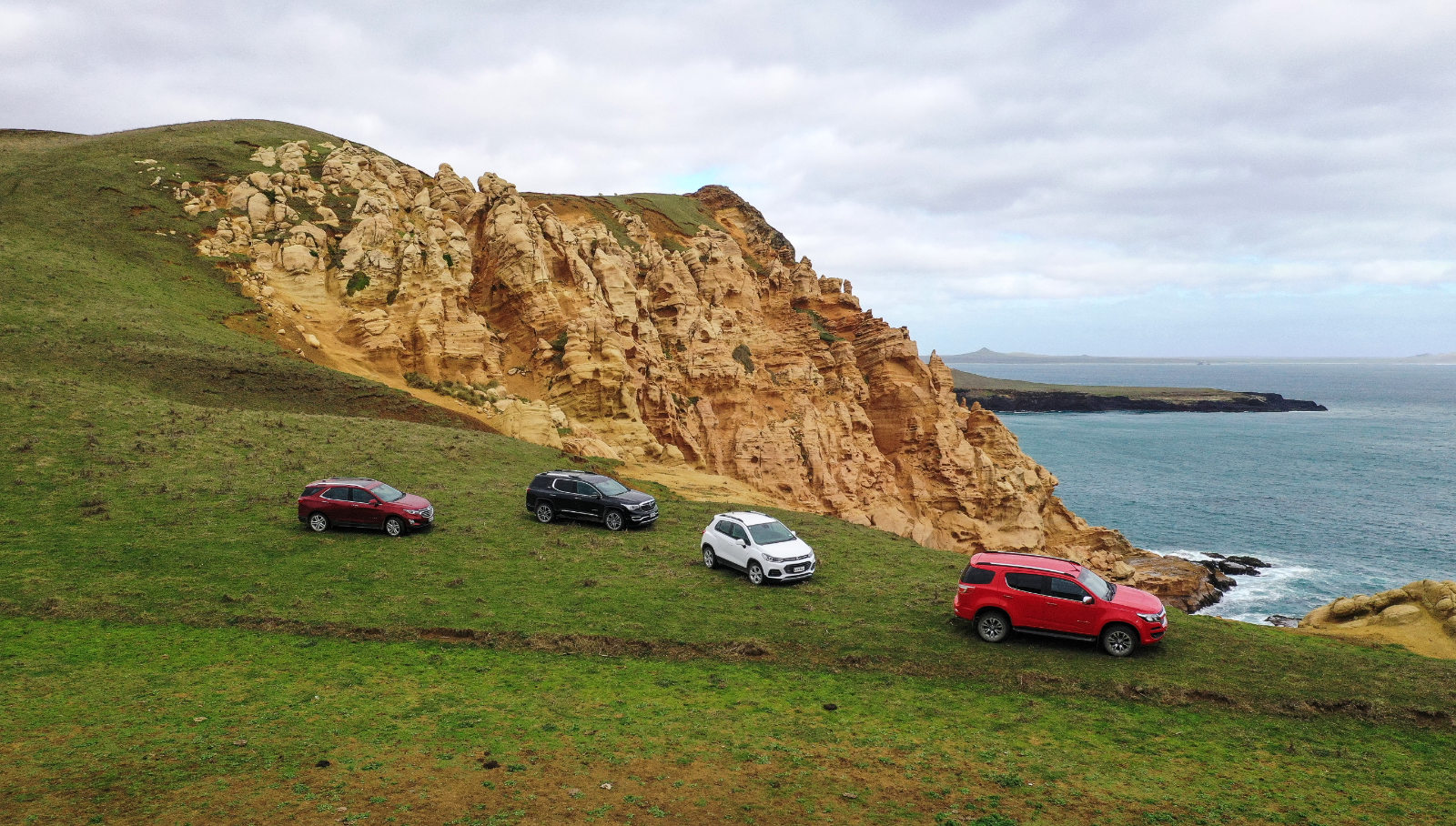
Holden SUVs (Equinox, Acadia, Trax and Trailblazer) at Cape Young, Rēkohu.
VOLANTE Some tourists might choose New Zealand to get away from it all, but New Zealanders go one step further, to Rēkohu in the Chatham Islands, explains Jack Yan
Photographed by Simon Watts and the author
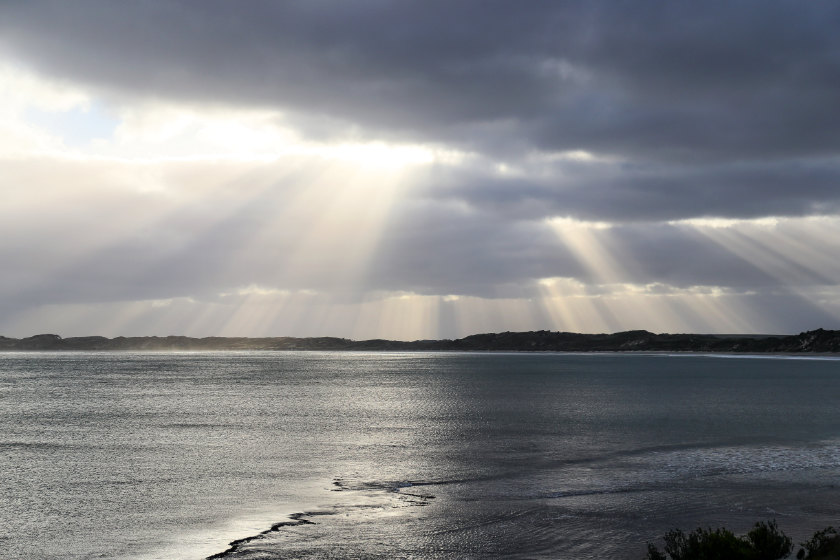
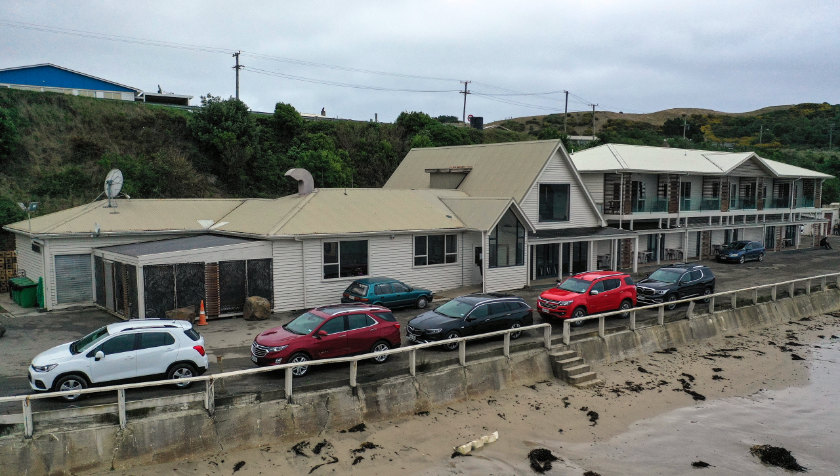
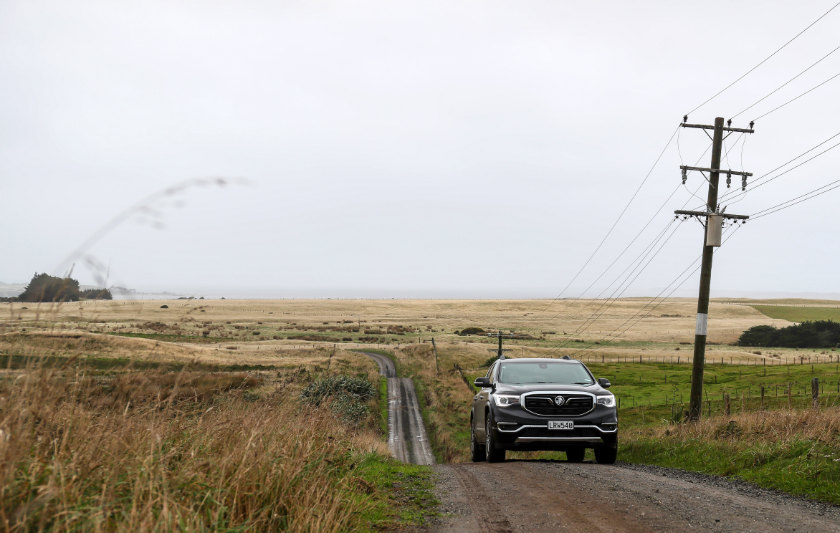 Above, from top: Sunrise at Rēkohu. The fleet outside Hotel Chatham. On the road in the Holden Acadia LTZ-V AWD.
Above, from top: Sunrise at Rēkohu. The fleet outside Hotel Chatham. On the road in the Holden Acadia LTZ-V AWD.
Jack Yan is publisher of Lucire.
To most people, New Zealand, or Aotearoa to give it its Māori name, is already remote: by most accounts, Antarctica aside, it’s the place that’s the most out of the way for most travellers, an occidental nation in the South Pacific that blends first-world aspects with a rich, native heritage from the Māori people. But what do New Zealanders regard as remote?
Few have ventured east into a different time zone to the Chatham Islands. Only 600 residents live on the islands, with the main island—also called Chatham, named for the first European ship to arrive there, the HMS Chatham, or Rēkohu as it’s known to the native Moriori people—a mere 920 km² in size. Paved roads are few, and you’ll need an all-wheel-drive vehicle to traverse most of the territory. Fortunately, Holden had just that, as its New Zealand branch celebrated 65 years of being in the country—the tenuous connection being that the Chathams arose out of the ocean 65 million years ago; though it’s probably more remarkable that it was the first time a car company had ever staged a new-car event there. As I said, it’s remote.
The irony for us at Lucire is that our HQ at the time of travel fell in the same electorate as the Chathams: it’s represented by the same member of parliament, even though Chatham Islanders would have to fly quite some distance, and into a different time zone, to see their representative at his electoral office. That’s what we had to do, and since Air Chathams didn’t fly out of Wellington every day, it meant a trip to another centre on Tuesday, that of Christchurch, for the eastward trip, with a total flying time of three hours and 1,000 km covered.
Air Chathams, the only passenger service to the islands, operated a Convair CV-580, a postwar design that lacked a conventional washbasin in its bathroom. Chocolate biscuits are served on board, quite different to anything on other domestic Kiwi airlines. The Convairs, with their Rolls-Royce engines, will be replaced by ATR-72s in due course, so it was a treat to fly on a vintage craft for a trip to the main Chatham Island, which some say is a step back in time, even if you put your watches forward 45 minutes for the new time zone.
The change makes perfect sense, since the sun rises that much earlier, and you soon adjust to it. In fact, the Chathams were the first populated place in the world to see the sunrise on January 1, 2000, the one day when its population ballooned with international tourists and media. While certain countries changed their time zones to be more hours ahead of GMT in the 1990s, to make the claim they were the first to reach the new millennium (any examination of the International Date Line on a modern map will reveal the Y2K-related mess), they arrived in 2000 in the dark. The Chathams still held the advantage that morning.
The airport is a tiny affair, with a single building and a single counter. There are no security checks to speak of, and luggage arrives in a room next to the main one. There is no cellphone reception anywhere on the island, though the airport claims to have wifi—though neither I nor former All Blacks’ rugby player and Holden spokesman Mils Muliaina, who sat next to me on the flight, was able to get a signal.
Heading to Hotel Chatham (officially in the singular, though on Facebook and Instagram tagging an s is added) in Waitangi, the main settlement on the island, we spied our fleet of Holden trucks and crossovers. The five would get us around the island. Holden sees that its SUV and truck sales are growing, and has filled niches aggressively over the last few years using the worldwide resources of its parent company.
Our first outing in the evening was to the southwest of the island, on the Waitangi Tuku Road. You soon realize that dirt, metal and gravel tracks are the norm. You are also reminded that you are remote as the sat-nav shows nothing (though, interestingly, Nokia’s Here Maps had the roads marked). And the 920 km² is larger than you think when you begin driving the island, seeing such distinct landscapes that run the gamut from rolling hills to rugged cliffs, and everything in between. Driving back in night-time takes more concentration, as the other absence is that of street lighting, with only a few scattered near the hotel.
The hotel, in an 1860s’ building, is family-run, and boasts comfortable rooms the equal of anything on the “mainland”, with wifi, satellite TV, and an extremely comfortable bed. Electricity comes through wind turbines and diesel, as it does with the rest of the island, but at great cost to locals—be prepared to pay a lot more for necessities such as milk. Hotel Chatham’s Toni Croon, our host, would serve as our local guide to the sights, and we were told that everyone on the island knew of our arrival. Out of 600 people, an influx of 29 journalists in all (although we were divided into three groups) is a significant addition to the island.
Seafood is a major contributor to the local economy, and we had plenty of it for dinner. The blue cod I sampled was among the freshest I’d ever tried, served as traditional fish and chips (while Anglo cuisine made it down here, the local interpretation preserves the natural flavour better). Crayfish is the other staple on Rēkohu, and until I had come here I had no idea just how good it could be. More on that later.
It’s soon morning with the light coming in to the hotel: it’s perfectly placed for the premium rooms to enjoy a Pacific Ocean view and, in my case, a view of the five Holden cars parked alongside it as well.
We departed Hotel Chatham with Croon on board the lead vehicle—she was drawn to the Holden Trailblazer, narrating via walkie-talkies as we explored her home. This was a truck that really appealed to me, having driven it a few years before, as it was capable and “honest”: the Trailblazer had no pretence about what it was.
Our first jaunt was on to the nearby beach at Waitangi—a safe bet for each of the vehicles, as there were no tricky bits on the sand, though naturally everyone had all-wheel drive engaged excepting the small Holden Trax, a small crossover with only front-wheel drive. It served as a good familiarization of the vehicles’ capabilities, and to remind us that we were a considerable distance away from the rest of New Zealand, across the waters to the west.
continued below
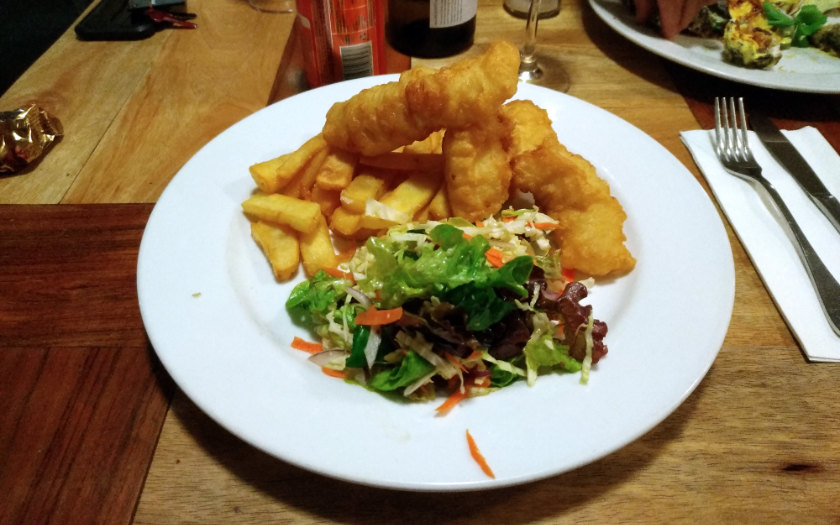
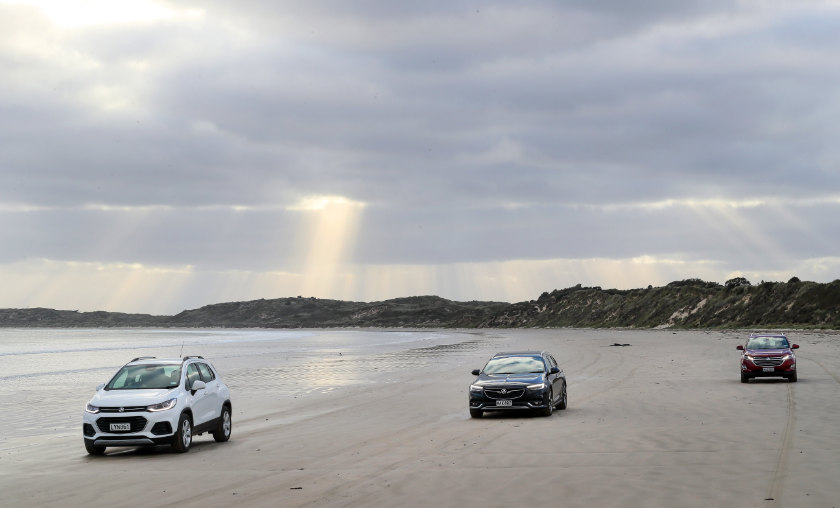
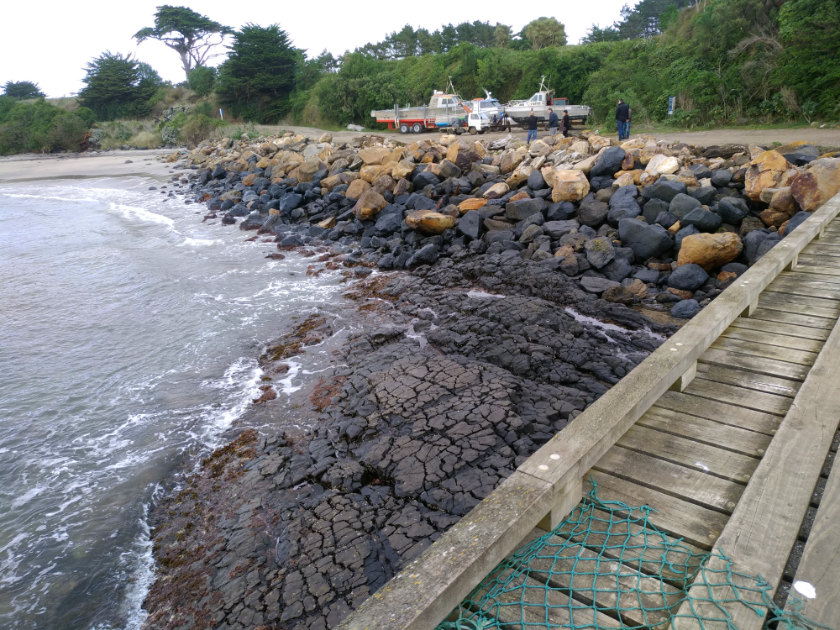
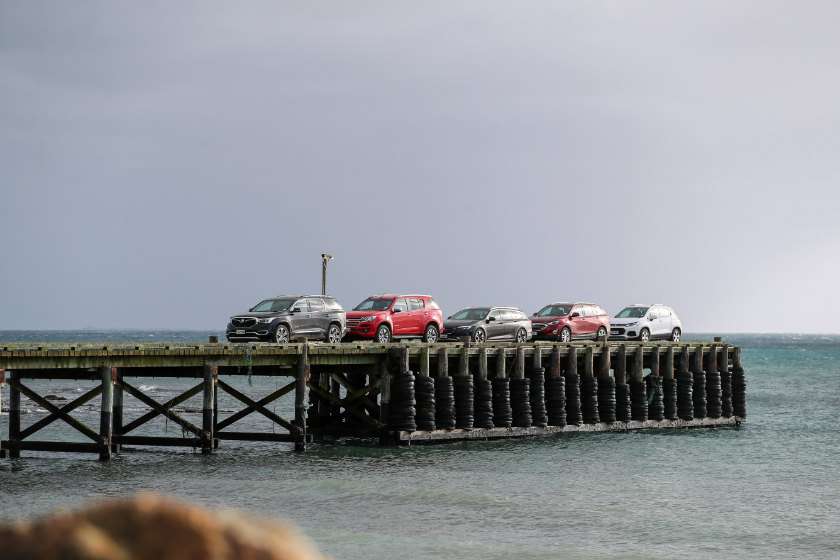 Above, from top: Blue cod for dinner at the Hotel Chatham. On the beach—Trax (in white) was surprisingly capable on some difficult terrain. Black rocks at Owenga Wharf. The Holden fleet on the jetty.
Above, from top: Blue cod for dinner at the Hotel Chatham. On the beach—Trax (in white) was surprisingly capable on some difficult terrain. Black rocks at Owenga Wharf. The Holden fleet on the jetty.
A brief stop at the local racecourse followed, near the Memorial Reserve named for former prime minister Norman Kirk, who had a close connection with the islands. The racecourse hosted the first horse race of the new millennium—it hosts its annual meet during the Gregorian New Year holiday and has done since 1875, with only two exceptions over the years. We headed to Owenga Wharf, which highlighted the island’s fishing activities: we passed boats and a large collection of crayfish traps, with the Holdens heading on to the beach and the wharf itself. The sun peeked through the clouds, the rays shining on to the wharf: this was a brisk morning by the shore and travellers would be well advised to pack warm coats and scarves. Owenga’s black rocks are distinctive and come up to the beach.
A significant stop on Chatham Island is the statue of Tame Horomona Rehe (his name Anglicized to Tommy Solomon), at Manukau Farm. The farm is owned by the Solomons, with forget-me-nots growing at the entrance to the statue. Tame is known to many New Zealanders as the last full-blooded Moriori, the original people of the island.
While once believed to be a race distinct from Māori, modern research indicates that the Moriori had descended from an earlier Māori tribe, arriving at Rēkohu around AD 1500. In their isolation, the culture diverged, including the language, art, and mythology. The language, however, is extinct, though some words have been collected in an attempt to preserve its remnants. Croon, who claims Moriori and Māori ancestry, told us that the Moriori language was very different, though academics believe that there are commonalities, albeit with major differences in pronunciation—which, if you consider that Norwegian and Swedish are different languages, would qualify Moriori and Māori as different, too.
With the far colder climate, the Moriori developed a hunter-gatherer lifestyle, consuming fish, seals and young sea birds. And with the small area size, they developed a non-aggression philosophy (Nunuku’s Law, named for a chief who banned murder and cannibalism), and stuck firmly to that even when Māori invaded in the 19th century, leading to their people enslaved and killed. By 1862, 101 of 2,000 Moriori survived after a brutal invasion, and the language was forbidden by Māori. Slavery ended at the end of the 1860s, but the tiny numbers of Moriori dwindled, with Tame Horomona Rehe the last of unmixed ancestry.
Tame’s statue faces east, as he wished, with a wild ocean view. Today, his memory is revered, and he is arguably the Chathams’ best known citizen. And when it comes to the descendants of Moriori, it’s simply a matter of personal identity rather than how much of which blood they have, just as it would be for Māori or other New Zealanders.
Passing farmland for cattle, with dry grass, we wound up on a hilltop on a northwest Chatham coast for the first vehicle swap of the day, when I went from the Holden Acadia to the slightly smaller Holden Equinox, a well equipped and well priced vehicle. Croon was keen to take us to look for fossilized shark teeth at Te Whanga Lagoon. These teeth are 30 million years old, and belonged to a shark ancestor, eugomphodos macrotus. There were plenty of teeth at the hotel, which I saw in bowls on the dining table the night before, but our search proved fruitless. I had packed gumboots for the occasion, but even with the right footwear, the search was unsuccessful.
At this point, while I was impressed with the wild landscapes of the Chathams, I wasn’t prepared for Wharekauri Station at Cape Young, home to some extreme golden ash cliff faces, interrupted by dark basalt rocks formed by molten lava that had shot up into the sky and fallen there, jutting out of the land; larger, flatter deposits are in the ocean by the cape. The ash formations are smooth up close, but at a distance their collective appearance is more violent, formed by random layers. I took more photos of the cliffs than anything else, and apparently they get even more dramatic further east. This one sight alone was worth the 1,000 km trip.
continued below
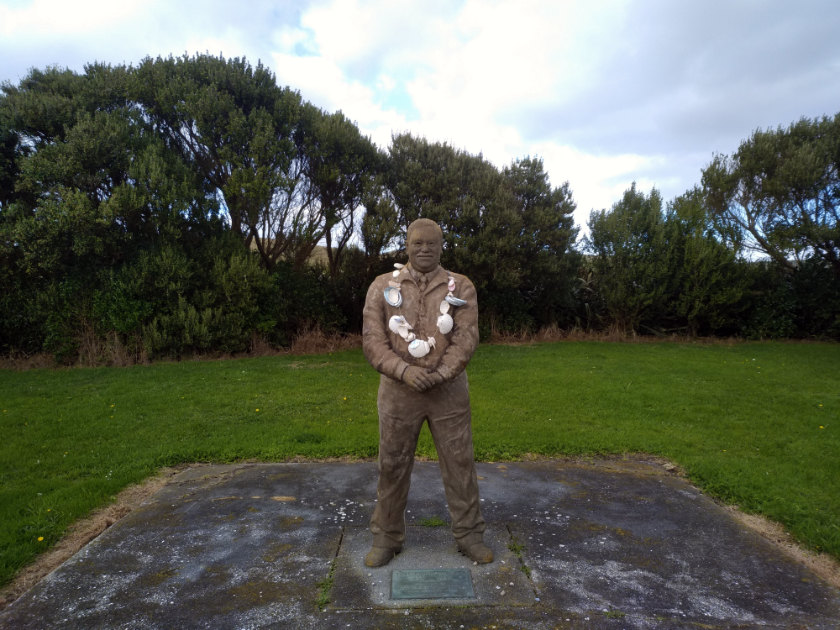
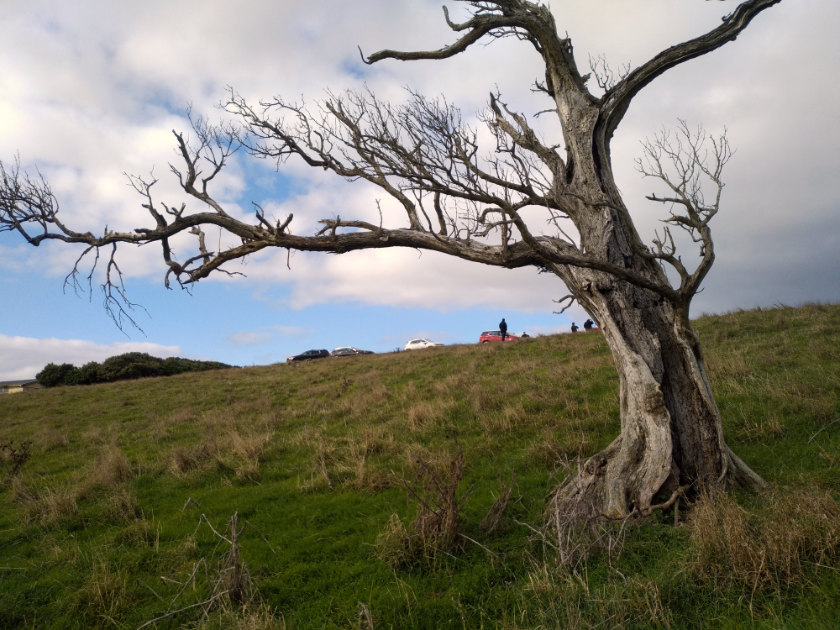
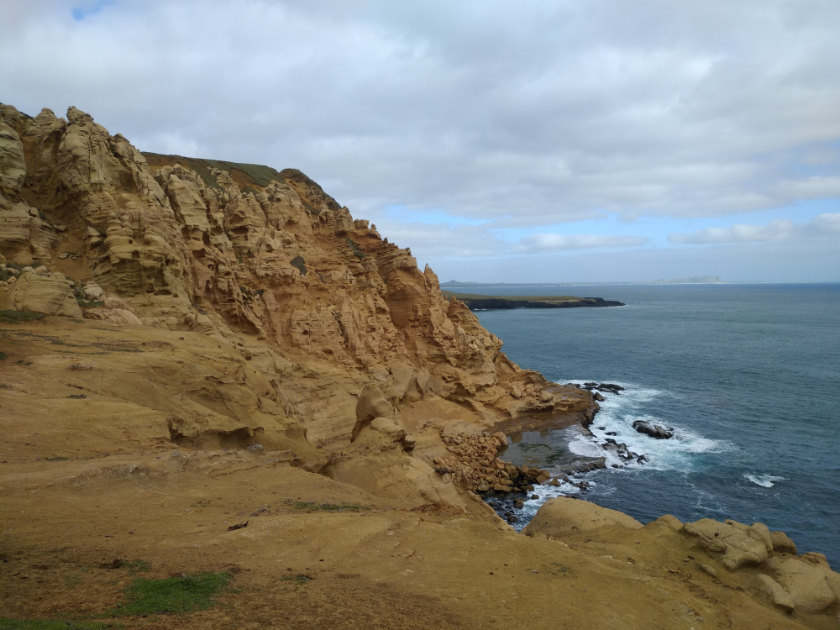

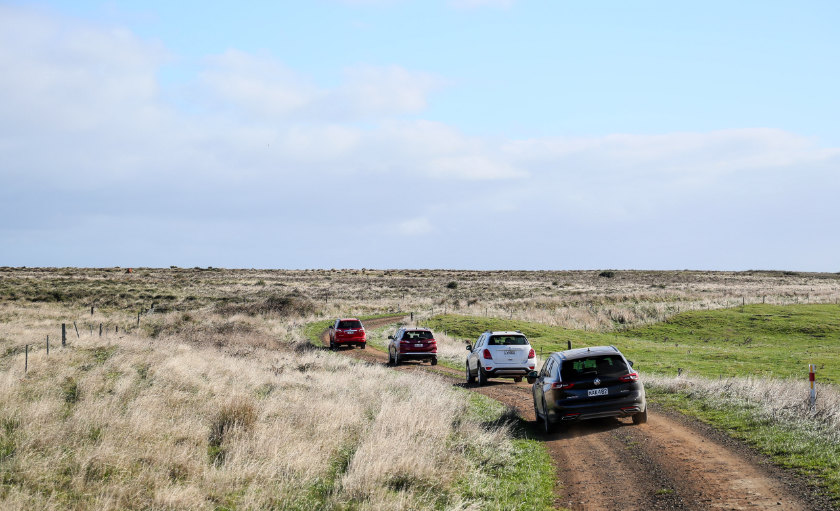 Above, from top: Tame Horomona Rehe’s statue at Manukau Farm. A tree at one of our vehicle changeovers. The ash cliff faces at Cape Young. Where old planes go to die. Traversing the island, Trialblazer in the lead (the author is in the Trax at this point).
Above, from top: Tame Horomona Rehe’s statue at Manukau Farm. A tree at one of our vehicle changeovers. The ash cliff faces at Cape Young. Where old planes go to die. Traversing the island, Trialblazer in the lead (the author is in the Trax at this point).
Kaiwhata and Pt Munning are private property, and Croon had arranged for us to visit. There is a museum there of sorts, but it might be more accurate to call it a hangar with an old aeroplane and trucks inside, and a junkyard, with the remnants of an old Air Chathams craft lying in pieces. There we were served the lunch that had been prepared by the hotel, which I thought was a delicious fried chicken, but which proved to be weka, a flightless bird roughly the size of a chicken.
From here we ventured to Kaingaroa, where the Royal Navy’s Lt William Broughton became the first white man to meet the local Moriori tribe. The coast here was far less dramatic than Cape Young, though it was more populated by fishing professionals and some homes.
The Holden Trax, the third car of the day, was remarkably capable, thanks to its ground clearance and big wheels, even if it didn’t have all-wheel drive; in fact, the lower Commodore Tourer, with all-wheel drive, didn’t have the ground clearance and was left behind whenever more inhospitable terrain beckoned. Cape Pattinson afforded us a view of Rangitatahi, or the Three Sisters, a group of islands that are still part of the Chathams’ archipelago, known for being the home of albatross breeding colonies.
It wasn’t all scenery, mind. We stopped by to visit one of the island’s most colourful personalities, known to all there. Tired of the rat race and the rising cost of living, Helen Bint, a 70-year-old local woman, decided to move to the Chathams and live in her grandparents’ house, which she found dilapidated upon her arrival a decade ago. She restored the historical stone cottage next to Maunganui, a 200 m high rocky outcrop, and lives alone there, without electricity (though she has a land line, accessed through a rotary-dial phone), and armed with rifles should she need to take care of pests, mainly possums.
The windows for the house aren’t original, but they are period, she tells us, sourced from a demolished building of the same vintage. Her nearest neighbour is 10 km away, and she has cats and dogs as pets to keep her company. She is very sociable, and a great conversationalist, sharing stories about her childhood (she spent a couple of years there with her grandparents), and general life on the Chathams, including calling the airline to ask about nature—people have the time of day to chat.
Bint is often visited by tourists, who sail past the Chathams, and keeps herself entertained. As a hobby she paints stones, which she gifts to passers-by, and she tends to her garden. On the wall are pictures of her family, and on one table is a photo of her self-admitted crush, the late American actor Michael Landon. Elsewhere are souvenirs left for her, or sent to her, by visitors from abroad.
continued below
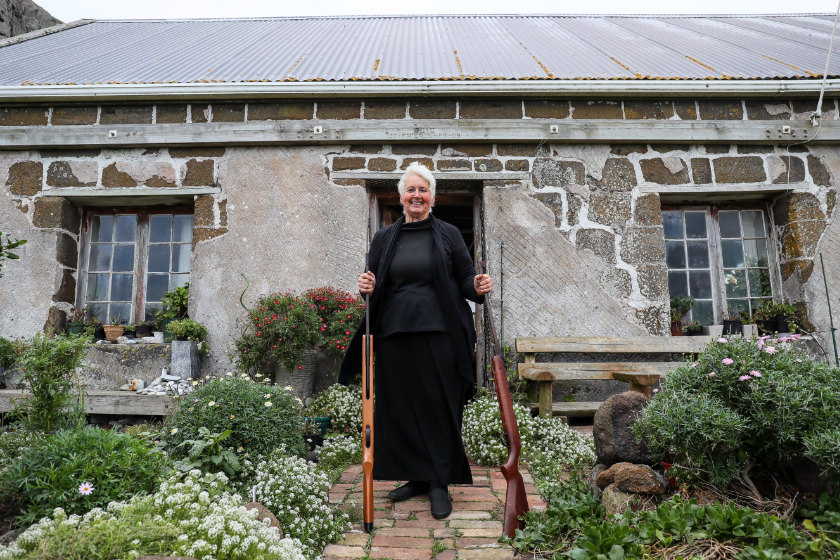
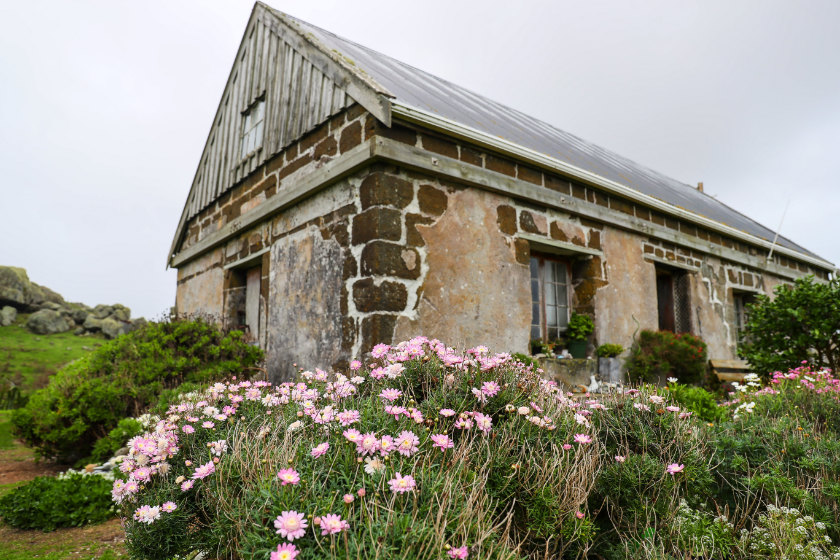
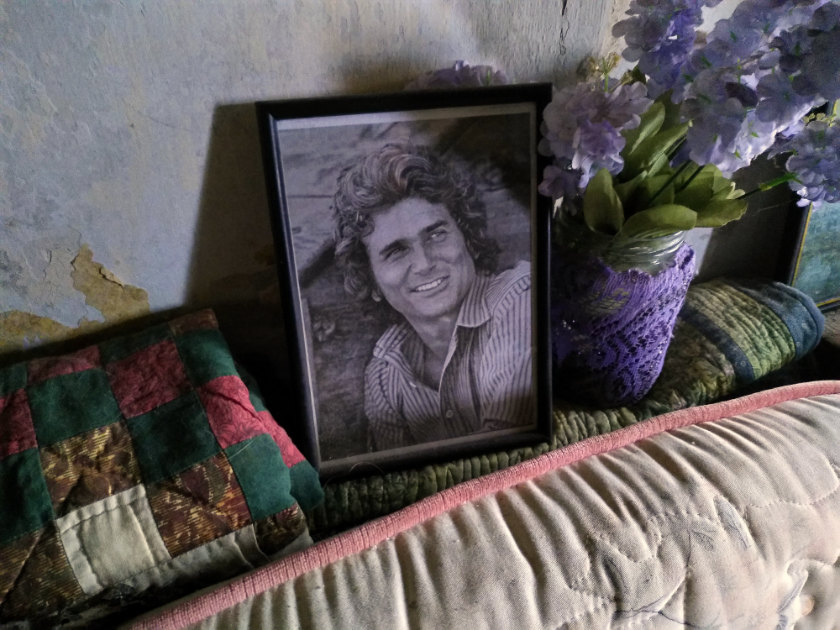
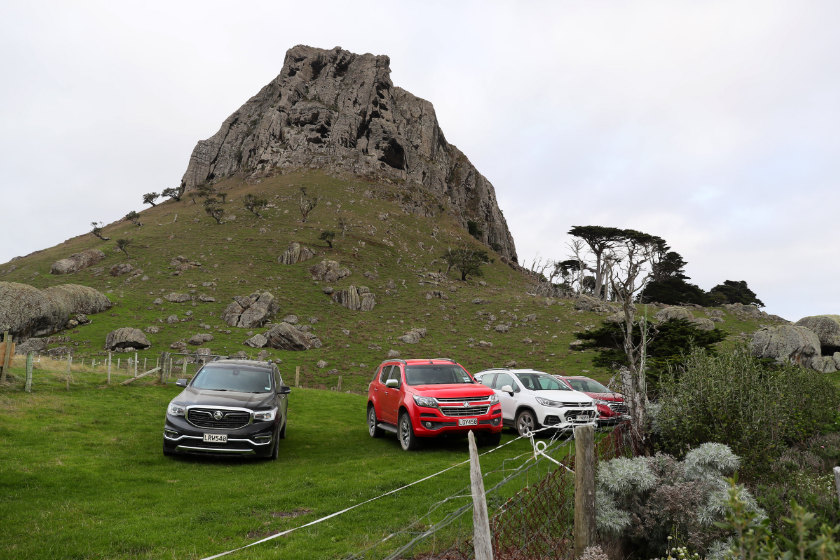 Above, from top: Local personality Helen Bint. Helen Bint’s cottage, once owned by her grandparents. Michael Landon’s photo is pride of place in Bint’s lounge.
Maunganui, a rocky outcrop by Bint’s cottage.
Above, from top: Local personality Helen Bint. Helen Bint’s cottage, once owned by her grandparents. Michael Landon’s photo is pride of place in Bint’s lounge.
Maunganui, a rocky outcrop by Bint’s cottage.
Not everything in the Chathams is quite so rugged. Admiral Garden Lodge is a luxury modern home owned by Croon’s parents, Val (Valentine) and Lois, who hosted a memorable dinner with crayfish—again the best I’ve come across—and steak. The Lodge sells its own honey, as well as works from local artists. Lois is an artist herself, and has a keen expert eye for the subject. It was too dark to explore the garden, which is well regarded, and named for the admiral butterflies that appeared when it was first developed.
The return drive to the hotel was in Holden’s Commodore Tourer, basically a raised station wagon with cladding, and lacking the ground clearance of the others. But we had done the most tricky terrain, and the Tourer was the best way to unwind. It was, in my opinion, the most stylish of the quintet, and the best suited for those of us who were more urban. The lack of street lighting was an issue as I had grown up in cities on the “mainland” as we made the way back from the lodge, and, like its rivals from other manufacturers, the Tourer felt happier once we were on paved roads near Waitangi.
We really had seen every landscape—our host, Holden’s Ed Finn, summarized the island as all of New Zealand in a confined area, and he wasn’t far wrong. Without cellphone reception, it was definitely a place to get away from it all, and when it came to each experience, there was no temptation to take a quick peek at your messages or post something to social media. You lived it to the full, in its presence. And that’s irreplaceable—maybe even the way things should be, when you encounter nature and its beauty. You had to wait till you got back to the hotel or somewhere with wifi before you were digitally connected again—and to me, that’s a perfectly decent way to live. •
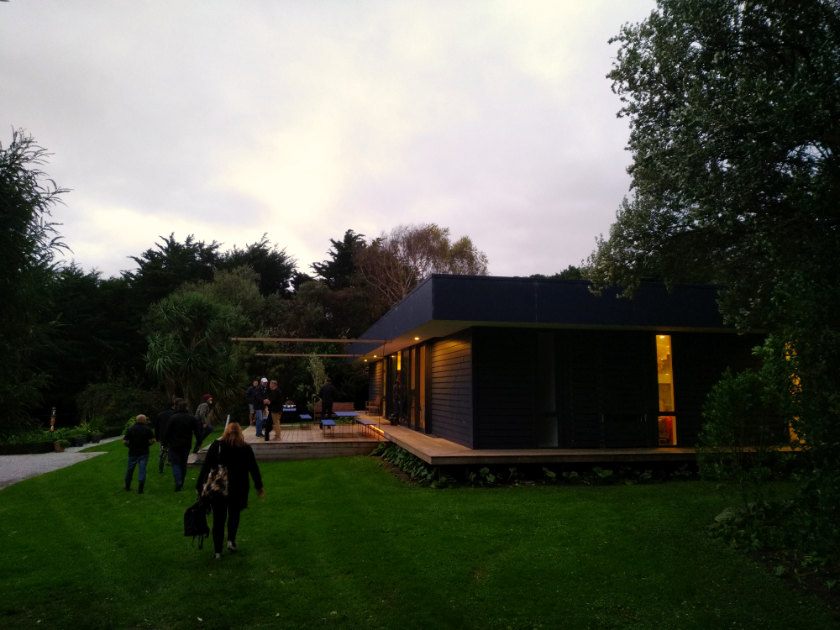
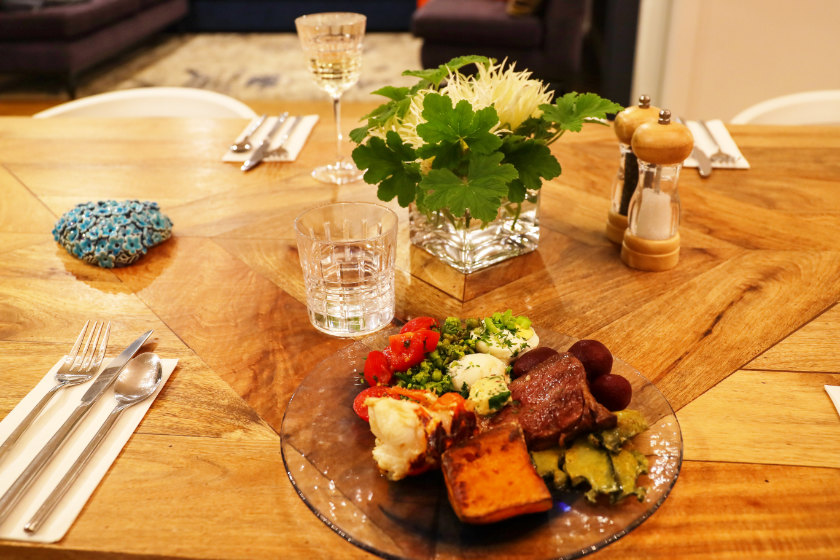
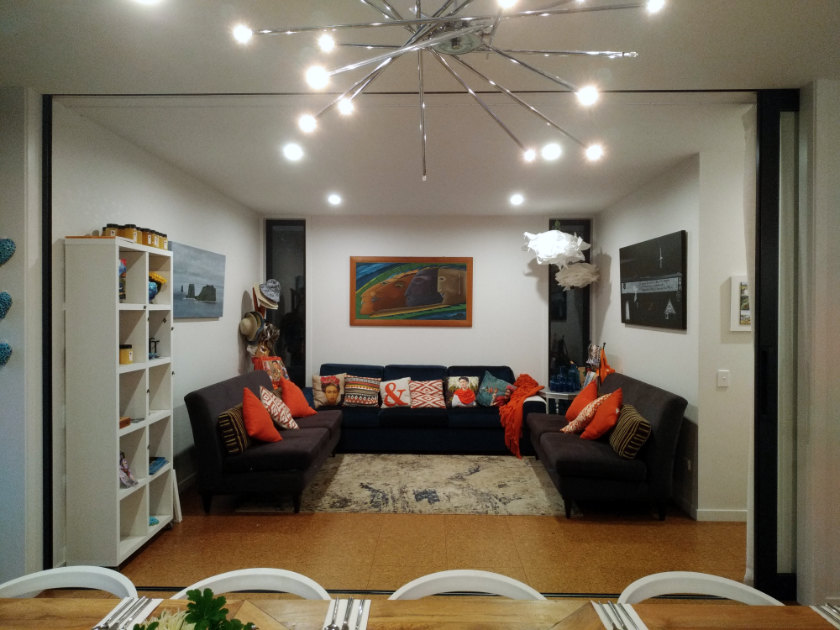

 Admiral Lodge. Our arrival in the evening. Steak and crayfish for dinner. Comfortable home décor at the Lodge. Admiral Lodge seels its own honey. Admiral Lodge’s Lois Croon is herself an artist, and supports her colleagues by featuring their work at her home.
Admiral Lodge. Our arrival in the evening. Steak and crayfish for dinner. Comfortable home décor at the Lodge. Admiral Lodge seels its own honey. Admiral Lodge’s Lois Croon is herself an artist, and supports her colleagues by featuring their work at her home.
Related articles hand-picked by our editors
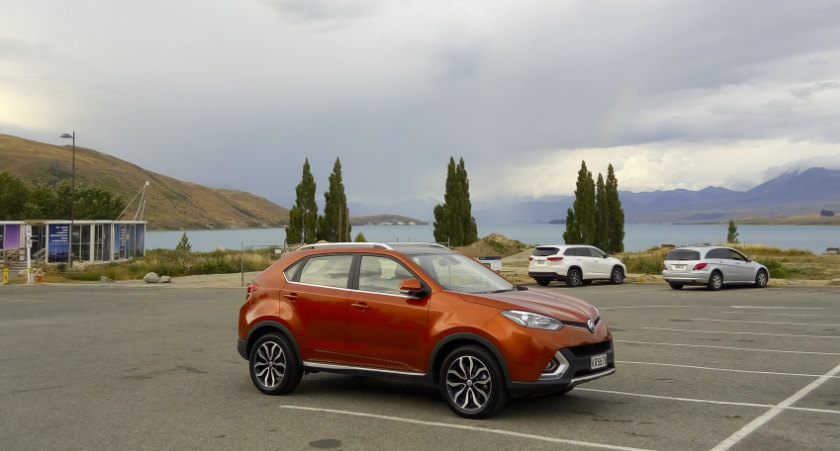
Unexpected journeys
MG’s new SUV, the GS, proved the perfect companion as Jack Yan and Amanda Satterthwaite head to Otago and Southland, with an unexpected detour early in their trip
Photographed by the authors
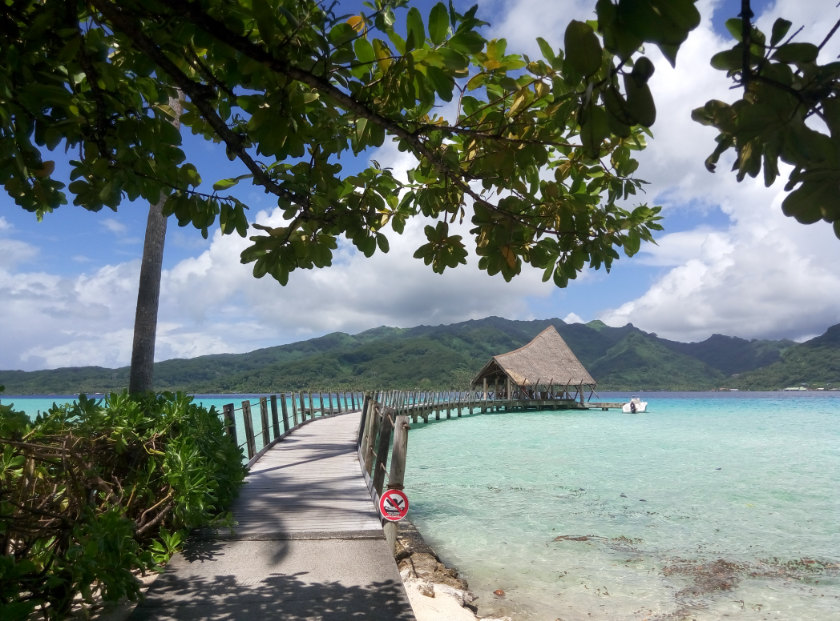
Tahitian treasures
Jack Yan and Amanda Satterthwaite travel to Tahiti for a summer getaway, relishing the culture of Papeete and beauty of Bora-Bora, while Taha’a—especially the private island resort of Le Taha’a—was a true luxury escape from the pressures of everyday life
Photographed by the authors
From issue 38 of Lucire
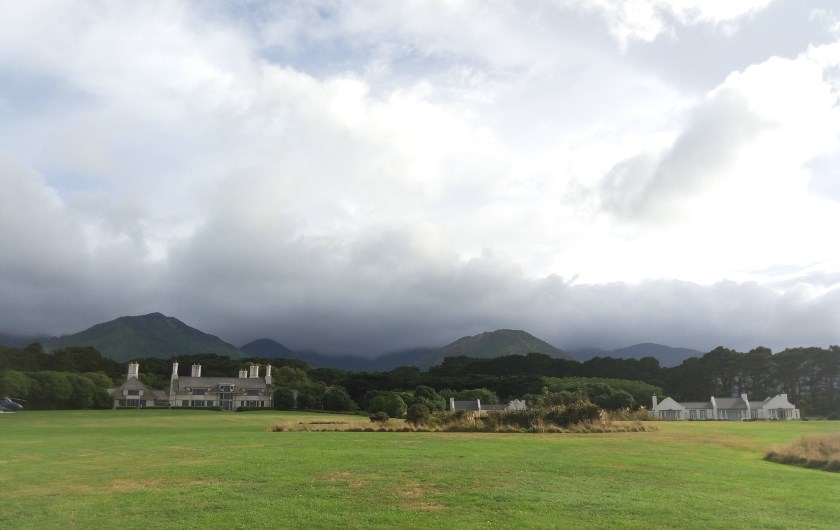
Church Road does Tom McDonald proud again
Church Road’s 2013 Tom vintages, named for the late wine pioneer Tom McDonald, are the best the winery has ever produced, says Jack Yan, who samples them at the luxury Wharekauhau Lodge in Wairarapa, New Zealand
Tasting photographs by Carmen Bird, other photographs by the author
Advertisement
Copyright ©1997–2022 by JY&A Media, part of Jack Yan & Associates. All rights reserved. JY&A terms and conditions and privacy policy apply to viewing this site. All prices in US dollars except where indicated. Contact us here.